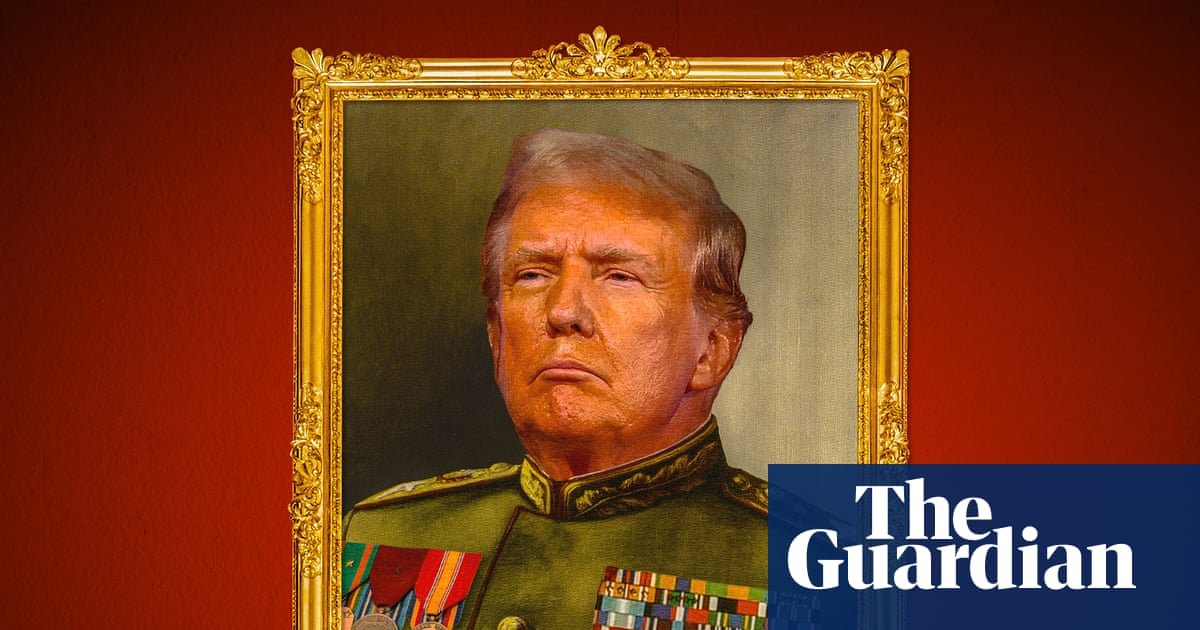Business
Tech Is Creating an Era of ‘Micro Businesses,’ Says Major AI Investor

Technology is enabling companies to focus on “the cool stuff again” and grow without hiring more people, tech investor Byron Deeter has said.
Deeter agreed when British venture capitalist Harry Stebbings asked him in a recent episode of the “20VC” podcast whether a tightening labor market is linked to companies embracing tech to become more efficient.
“I love the statements these executives are making, which is ‘we’re going to give you all the tools in the world to supercharge your daily job so that you’re doing the cool stuff again,'” Deeter, a partner at venture capitalist firm Bessemer Venture Partners, said.
Deeter added that C-suite executives have been telling investors and customers that they can “grow the business,” but they “don’t need to grow the workforce to do it.”
“I think we’re going to see the era of the micro business,” said Deeter, whose portfolio includes Anthropic, Canva, and DocuSign. “I think that we’re going to have, you know, 10-person companies that are crossing billion-dollar valuations.”
“I think that is great for the economy,” Deeter added.
Tech solutions are very proficient in addressing software, hardware, and services budgets, he said, adding that they have helped to supercharge people doing administrative work in the legal, medical, and accounting sectors.
“We’re taking away a lot of the manual transcription and summarization, and error-prone, laborious processes, and we’re freeing them up,” Deeter said.
Improvements in productivity tools come as several Big Tech giants have announced layoffs so far this year. In January, Meta said it would let go of 5% of its workforce in an attempt to “move out low-performers,” according to an internal memo. Microsoft has led multiple rounds of job cuts in 2025, including a July announcement that 9,000 roles would be terminated.
Business
How AI is Shaping the Future of Cybersecurity for Business in 2025

As increasingly more businesses rely on cloud infrastructures, the alignment of cybersecurity for business and cloud network protection has never been greater. Business enterprises face a new era of threats: artificial-intelligence-fortified threats, exploits designed specifically for clouds, and highly evolved ransomware campaigns initiated in 2025.
Staying abreast of these trends and strategies of adaptive defense is paramount when it comes to protecting information, business continuity, and customer trust.
1. Emergence of AI-Driven Ransomware
Recent research revealed what is possibly the first-ever AI-driven ransomware called PromptLock. It deploys locally maintained large language models to create hostile Lua scripts and can possibly attack Windows, Linux, and macOS operating systems with highly developed encryption and cross-platform functionalities.
At the same time, more extensive research verifies that online criminals are utilizing generative AI software such as Anthropic’s Claude to implement automation of each step of ransomware use, starting from generating malware and up to writing ransom claims.
Why it is important for cloud network security: Technical requirements for complex attacks are lowered by AI. Resource access-automated cloud environments are ideal targets for quick customized ransomware that ignores conventional protection methods.
2. Cloud Computing Providers Faced with Threats
Security analysts discovered that the threat actor known as the Murky Panda has been using cloud service provider zero-days against their target infrastructures. These attack tools possess lateral movement within networks and have a tendency of bypassing common detection technologies.
Business takeaway: Even cloud infrastructure run by major players can be breached. Good security starts with making sure your provider implements stringent patching, visibility, and segmentation.
3. Automated AI-Enabled Threats on the
Cyberattacks are now exceedingly common thanks to automation facilitated by artificial intelligence,Cybersecurity Ventures’ latest report found automated scanning peaked at 36,000 scans per second worldwide and triggered a whopping surge of credential-based breaches and stolen credentials available on the dark web.
Implication: Both cloud and non-cloud networks must integrate real-time defenses like AI-powered threat detection, Zero Trust, and behavioral analytics so that threat detection can occur before damages are being caused.
4. Best Practices in Cloud Network Security
a. AI-Infused Threat Defense Platforms
Modern cloud network security employs AI to identify anomalies and respond within a flash:
- More and more businesses use real-time machine learning to follow cloud behaviors, spot possible risks early on, and react before they take place.
- State-of-the-art protection even catches ransomware at real-time with detection rates higher than 96%.
b. Zero Trust Architecture
Trust nothing by default ever. Zero Trust involves verification of end-users, devices, and access rights on a constant basis before each request. For cloud networks this means deploying identity verification, validation of device compliance, and least-privilege configurations.
c. Governance & Shadow AI Mitigation
With rapid business uptake of AI technologies, Shadow AI or unregulated, employee- operated AI is a real security risk. Data and AI use need governance and monitoring policies to remain within control.
d. Attack Path and Continuous Exposure Management
Cloud infrastructure tends to have misconfigurations and vulnerabilities that go unpatched. Continuously Exposure Management (CEM) platforms enable you to map attack paths within hybrid environments and remediate based on real-world danger.
5. Strategic Framework for Secure Cloud Networks
To stay one step ahead, businesses need a multi-leveled forward-thinking approach:
Employ scanner and real-time monitoring with AI-powered software that identify oddities and respond in real time.
Extend Zero Trust to human-cloud interactions: use micro-level access controls and verify identities at all locations.
Emphasize vulnerability reduction using CEM tools to focus on those vulnerabilities that are of highest concern within business operations.
Set clear AI policies not to unofficially use shadow AI software and protect all-around.
Back up rigorously, in immutable, tested ways, to maintain resilience against AI-enhanced ransomware.
Conclusion
In short, cloud network security from cybersecurity for business requires agility, next-gen detection, and architectural rigor. Since AI-led threats and ransomware are increasingly autonomous and specificity-driven, the use of antiquated perimeter defenses is no longer tenable. Companies need to move forward with AI-supported security, Zero Trust, visibility, and robust governance.
Secure Your Cloud Future with ELLIMANTECH
Looking to fortify cloud network security and remain one step ahead of emerging threats? ELLIMANTECH delivers customized cybersecurity protection developed to suit modern business needs: AI-driven threat identification and incident management, Zero Trust network implementations continuing surveillance and control of exposure, Reliable cloud backup, and disaster recovery.
Protect your business with security designed for today, and tomorrow. Take a look at https://ellimantech.com and get started.
Business
Reeves says Thames Water should find ‘market-based solution’ | Thames Water

Rachel Reeves has told investors she would like to see a “market-based solution” for problems at Thames Water, rather than placing the company into special administration.
The chancellor sent a letter in July to the Thames Water creditor group, which represents about 100 financial institutions that are trying to create a rescue plan for the company.
Reeves sent the letter after comments from the environment secretary, Steve Reed, in June. He told MPs the government had “stepped up our preparations and stand ready for all eventualities … including [a] special administration regime if that were to become necessary”.
The remarks are reported to have caused concern among some debt-holders in the water industry, as such steps would involve a temporary form of nationalisation, leading to the restructuring of its £17.7bn net debt and the possible sale of the company to new owners.
In the letter, seen by the Times, Reeves wrote: “The government recognises the seriousness of the situation facing Thames Water … Our position remains that the company should find a sustainable, market-based solution to the current situation.
“This solution must not only secure the company’s long-term financial stability but also deliver a successful turnaround that achieves positive outcomes for customers and the environment.”
However, she echoed Reed’s earlier remarks, writing: “The government is prepared for all eventualities across its regulated industries and has undertaken detailed contingency planning for a special administration regime, should this be required to ensure the continued provision of vital public services.”
Thames Water has been under the effective control of its senior creditors, which hold most of its debt pile since shareholders walked away from the company last year.
The water company, which serves 16 million customers across London and the south-east, has been on the verge of financial collapse for several years, after decades of underinvestment and dividend extraction.
after newsletter promotion
Thames has desperately been seeking a way out of the turmoil without the government being forced to take control under a special administration regime, which is essentially temporary nationalisation. Last month it emerged the government had engaged the advisory firm FTI Consulting to look at its options, including special administration.
The government is planning to abolish Ofwat, which could result in further complications as rival water companies might also consider legal action if Thames secures a favourable deal not available to them.
The government was approached for comment.
Business
Donald Trump says he is not a dictator. Isn’t he? | Donald Trump

Speaking in the Oval Office this week, Donald Trump had something he wanted to clarify.
“I’m not a dictator. I don’t like a dictator,” the president said.
Yet his comments came weeks after he deployed armed soldiers and Humvee-style military vehicles to patrol the streets of Washington, claiming, despite all available evidence, that the use of the national guard was necessary to control crime.
The remarks followed Trump withholding, or threatening to withhold, billions of dollars from universities, and after the increasingly politicized FBI raid on the home of John Bolton, a prominent critic of Trump.
Trump has also targeted law firms who have filed lawsuits he opposes, while the Federal Communications Commission, led by a Trump appointee, is investigating every major broadcast network except Fox, which owns the pro-Trump Fox News channel. Trump has personally sued news channels over critical coverage and fired the government’s top labour statistician because she published jobs data that he didn’t like.
He has threatened Democrats with prosecution, and demanded that former president Barack Obama be investigated for treason. Trump has done all this as his family has ostensibly earned millions of dollars from his presidency.
None of these things are typical for a democratic leader. So … is Trump a dictator?
“Yes, of course,” said Kim Lane Scheppele, a professor of sociology at Princeton University who spent years researching autocracies including Hungary and Russia. Scheppele said she had been wavering on using the term “dictatorship” until recently, but said: “If I was hesitating before, it’s this mobilization of the national guard and the indication that he plans to overtake resistance by force that now means we’re in it.”
Trump, emboldened by a Republican party that appears willing to let their leader do whatever he wants, is now threatening to send troops to Democratic-run cities including Chicago, Baltimore, San Francisco and New York City, prompting outcry and accusations of abuse of power.
Scheppele said: “He’s really planning a military, repressive force, to go out into the streets of the places that are most likely to resist his dictatorship and to just put down the whole thing by force.”
Most modern dictators try to hide their aspirations. Scheppele said leaders such as Russia’s Vladimir Putin, Hungary’s Viktor Orbán and Turkey’s Recep Tayyip Erdoğan have gone to “great lengths” to avoid looking like “20th-century dictators” in the hopes they can avoid the label.
“If you think of dictators as, you know, tanks in the streets and large numbers of military people saluting the leader, and big posters of the leader going up on national buildings, all that stuff does remind everybody of Hitler’s Germany and Stalin’s Russia and all and Mussolini’s Italy,” she said.
Hence Orbán, Erdoğan and the like attempting to avoid those scenes. But it doesn’t seem to bother Trump.
Just this week, a giant banner was draped over the Department of Labor building, showing Trump glaring out over Washington DC above the slogan “American workers first”. On his birthday, which coincided with the 250th anniversary of the formation of the US army, he held a military parade in the capital, and was reportedly furious that the troops did not look “menacing” enough.
In Trump’s first term, as he railed against political norms, the book How Democracies Die – which examined the unraveling of democracies around the world – became a bestseller. Steven Levitsky, the book’s co-author and a political scientist at Harvard University, said Trump has the mentality of “a classic tin-pot dictator”, but said the president hasn’t managed to become one so far.
“Technically in political science terms, no, he’s not a dictator. The United States, I think, is collapsing into some form of authoritarianism. But it has not consolidated into an outright dictatorship,” Levitsky said.
Trump has said he is not a dictator, but claimed last week: “A lot of people are saying: ‘Maybe we’d like a dictator.’” It’s not clear who he was referring to, but he continued the theme on Tuesday.
“The line is that I’m a dictator. But I stop crime. So a lot of people say: ‘You know, if that’s the case, I’d rather have a dictator,’” Trump said in a cabinet meeting.
The Guardian asked the White House what data Trump was citing when he claimed Americans want a dictator, but did not receive a response.
Levitsky reiterated that he does not believe Trump is a dictator in the truest sense, but added: “Dictators everywhere, first of all, claim that they’re not dictators. And second of all, somewhat contradictorally, claim that the people want a dictator. Those are classic dictator lines.”
The US has expressed interest in authoritarianism before. At the height of his fame a third of Americans tuned into the radio broadcasts of Charles Coughlin, a Catholic priest whose antisemitic broadcasts praised the likes of Benito Mussolini. Jim Crow laws were allowed to enforce racial segregation into the 1960s, while Senator Joseph McCarthy was allowed to persecute alleged communists during the so-called Red Scare.
“You could always, in many, many periods of US history, find 25, 30% of the US electorate that was authoritarian-leaning, and I think that’s definitely true today,” Levitsky said.
Today, that makes up a “big chunk” of the Republican party, he said, and Trump is leaning into that base.
“There’s a real performative side to this government’s authoritarianism, which suggests that there is a constituency for it, which is very frightening. And I really haven’t seen anything like this sort of performative authoritarianism, honestly, since the 30s in Europe,” he said.
Most 21st-century authoritarian countries are “hybrid regimes”, Levitsky said. He pointed to Venezuela, Hungary, Tunisia and Turkey, where Erdoğan has spent more than two decades in power, cementing his position by cracking down on the country’s media and bringing thousands of criminal cases against people who insult the president.
“They’re authoritarian, in that they’re not fully democratic: there’s widespread abuse of power that tilts the playing field against the opposition. So nobody would look at Turkey and say: ‘That’s a democracy.’ But they’re not what I would call a dictatorship. And that’s what I think the great danger is in the United States.”
There is, Levitsky said, a “non-zero chance” that Trump could use emergency powers – as he has in justifying immigration measures and tariffs – to subvert the constitution, potentially undermining elections.
But, he said: “The more likely outcome is a more mild authoritarianism where opposition exists, opposition is above board, opposition contests for power, competes in elections.
“The government doesn’t win all its battles, but abuse of power – as we’ve seen in the last six, seven months – abuse of power is so widespread, so systematic, and violations of law, violations of rights are so widespread and systematic that the playing field begins to tilt against the opposition.
“And you would not call that a full democracy.”
-

 Business3 days ago
Business3 days agoThe Guardian view on Trump and the Fed: independence is no substitute for accountability | Editorial
-
Tools & Platforms3 weeks ago
Building Trust in Military AI Starts with Opening the Black Box – War on the Rocks
-

 Ethics & Policy1 month ago
Ethics & Policy1 month agoSDAIA Supports Saudi Arabia’s Leadership in Shaping Global AI Ethics, Policy, and Research – وكالة الأنباء السعودية
-

 Events & Conferences3 months ago
Events & Conferences3 months agoJourney to 1000 models: Scaling Instagram’s recommendation system
-

 Jobs & Careers2 months ago
Jobs & Careers2 months agoMumbai-based Perplexity Alternative Has 60k+ Users Without Funding
-

 Funding & Business2 months ago
Funding & Business2 months agoKayak and Expedia race to build AI travel agents that turn social posts into itineraries
-

 Education2 months ago
Education2 months agoVEX Robotics launches AI-powered classroom robotics system
-

 Podcasts & Talks2 months ago
Podcasts & Talks2 months agoHappy 4th of July! 🎆 Made with Veo 3 in Gemini
-

 Podcasts & Talks2 months ago
Podcasts & Talks2 months agoOpenAI 🤝 @teamganassi
-

 Mergers & Acquisitions2 months ago
Mergers & Acquisitions2 months agoDonald Trump suggests US government review subsidies to Elon Musk’s companies

















